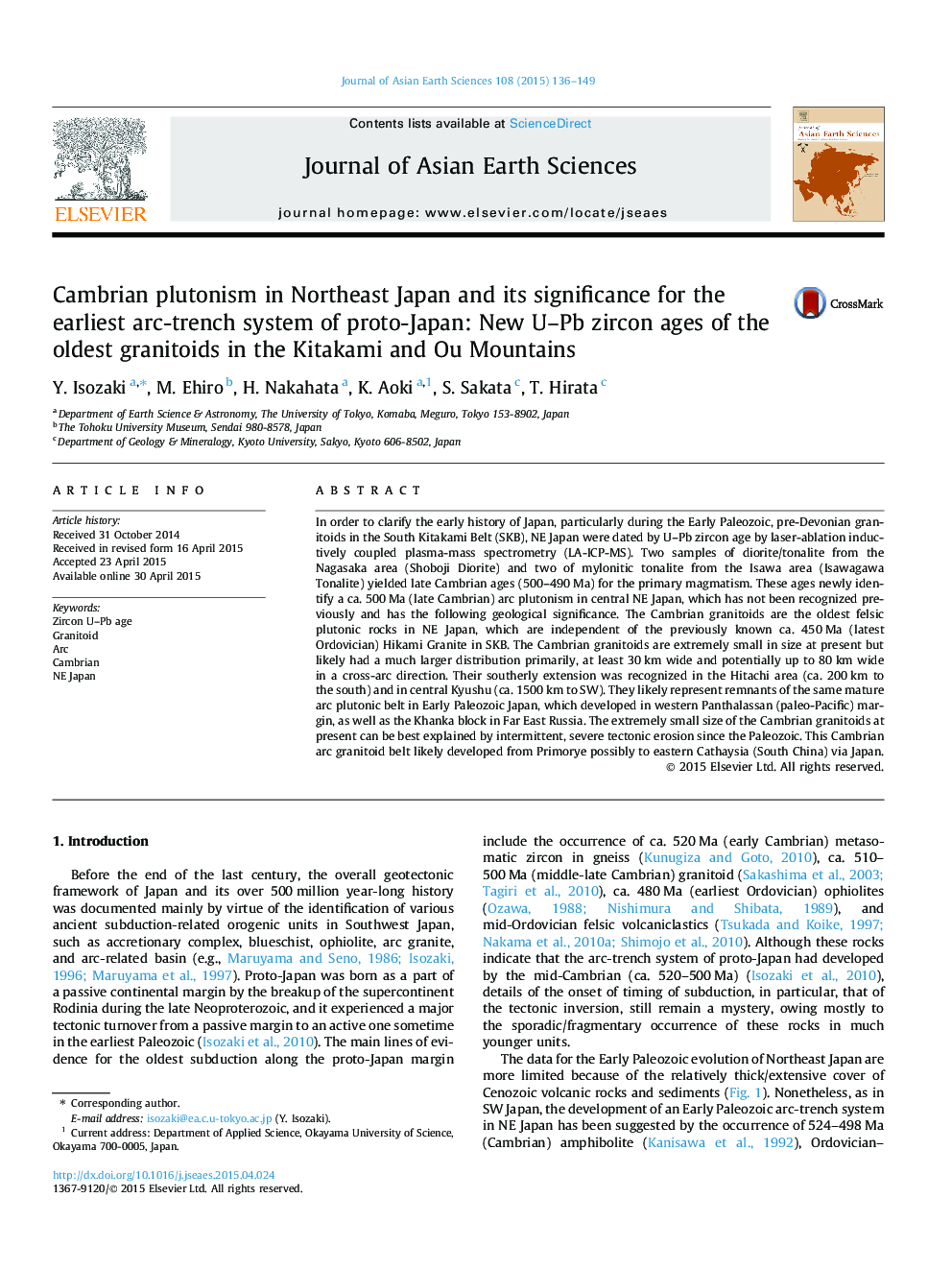| Article ID | Journal | Published Year | Pages | File Type |
|---|---|---|---|---|
| 6444056 | Journal of Asian Earth Sciences | 2015 | 14 Pages |
Abstract
In order to clarify the early history of Japan, particularly during the Early Paleozoic, pre-Devonian granitoids in the South Kitakami Belt (SKB), NE Japan were dated by U-Pb zircon age by laser-ablation inductively coupled plasma-mass spectrometry (LA-ICP-MS). Two samples of diorite/tonalite from the Nagasaka area (Shoboji Diorite) and two of mylonitic tonalite from the Isawa area (Isawagawa Tonalite) yielded late Cambrian ages (500-490Â Ma) for the primary magmatism. These ages newly identify a ca. 500Â Ma (late Cambrian) arc plutonism in central NE Japan, which has not been recognized previously and has the following geological significance. The Cambrian granitoids are the oldest felsic plutonic rocks in NE Japan, which are independent of the previously known ca. 450Â Ma (latest Ordovician) Hikami Granite in SKB. The Cambrian granitoids are extremely small in size at present but likely had a much larger distribution primarily, at least 30Â km wide and potentially up to 80Â km wide in a cross-arc direction. Their southerly extension was recognized in the Hitachi area (ca. 200Â km to the south) and in central Kyushu (ca. 1500Â km to SW). They likely represent remnants of the same mature arc plutonic belt in Early Paleozoic Japan, which developed in western Panthalassan (paleo-Pacific) margin, as well as the Khanka block in Far East Russia. The extremely small size of the Cambrian granitoids at present can be best explained by intermittent, severe tectonic erosion since the Paleozoic. This Cambrian arc granitoid belt likely developed from Primorye possibly to eastern Cathaysia (South China) via Japan.
Related Topics
Physical Sciences and Engineering
Earth and Planetary Sciences
Geology
Authors
Y. Isozaki, M. Ehiro, H. Nakahata, K. Aoki, S. Sakata, T. Hirata,
